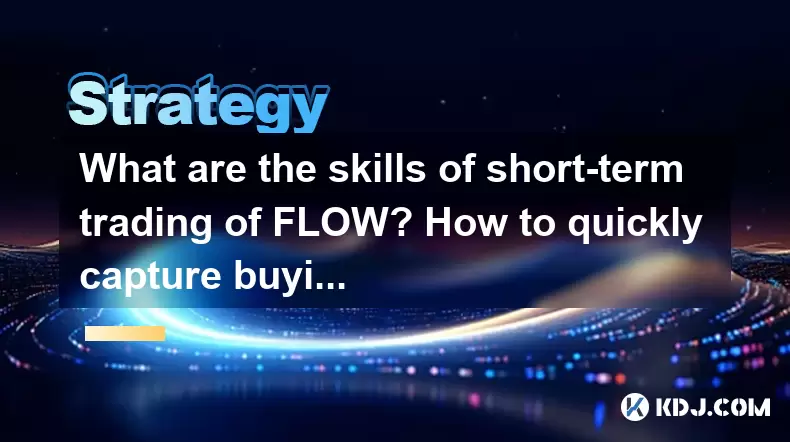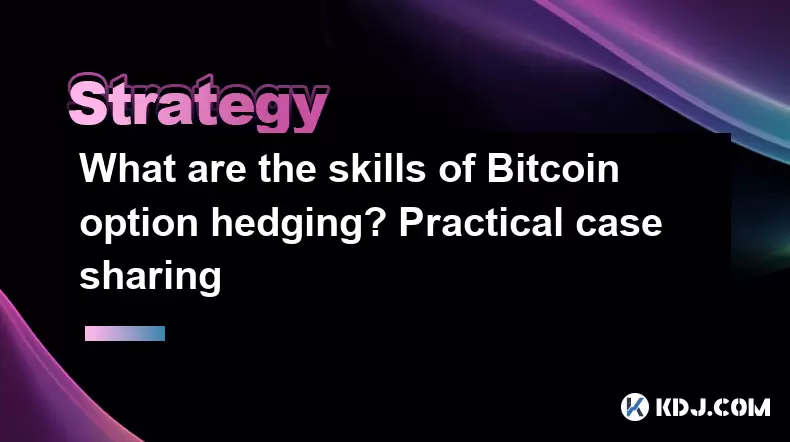-
 Bitcoin
Bitcoin $108,017.2353
-0.81% -
 Ethereum
Ethereum $2,512.4118
-1.58% -
 Tether USDt
Tether USDt $1.0002
-0.03% -
 XRP
XRP $2.2174
-1.03% -
 BNB
BNB $654.8304
-0.79% -
 Solana
Solana $147.9384
-1.76% -
 USDC
USDC $1.0000
-0.01% -
 TRON
TRON $0.2841
-0.76% -
 Dogecoin
Dogecoin $0.1636
-2.09% -
 Cardano
Cardano $0.5726
-1.72% -
 Hyperliquid
Hyperliquid $39.1934
1.09% -
 Sui
Sui $2.9091
-0.59% -
 Bitcoin Cash
Bitcoin Cash $482.1305
0.00% -
 Chainlink
Chainlink $13.1729
-1.54% -
 UNUS SED LEO
UNUS SED LEO $9.0243
-0.18% -
 Avalanche
Avalanche $17.8018
-1.90% -
 Stellar
Stellar $0.2363
-1.69% -
 Toncoin
Toncoin $2.7388
-3.03% -
 Shiba Inu
Shiba Inu $0.0...01141
-1.71% -
 Litecoin
Litecoin $86.3646
-1.98% -
 Hedera
Hedera $0.1546
-0.80% -
 Monero
Monero $311.8554
-1.96% -
 Dai
Dai $1.0000
-0.01% -
 Polkadot
Polkadot $3.3473
-2.69% -
 Ethena USDe
Ethena USDe $1.0001
-0.01% -
 Bitget Token
Bitget Token $4.3982
-1.56% -
 Uniswap
Uniswap $6.9541
-5.35% -
 Aave
Aave $271.7716
0.96% -
 Pepe
Pepe $0.0...09662
-1.44% -
 Pi
Pi $0.4609
-4.93%
What are the skills of short-term trading of FLOW? How to quickly capture buying and selling signals?
Short-term FLOW trading requires technical analysis, market sentiment understanding, and risk management to capture buying and selling signals effectively.
May 08, 2025 at 07:56 pm

What are the skills of short-term trading of FLOW? How to quickly capture buying and selling signals?
Short-term trading of cryptocurrencies like FLOW requires a blend of technical analysis, market sentiment understanding, and disciplined risk management. FLOW, the native token of the Flow blockchain, designed for mainstream adoption of decentralized applications, has its unique characteristics that traders need to consider. In this article, we will delve into the essential skills needed for short-term trading of FLOW and the strategies to quickly capture buying and selling signals.
Understanding the Basics of FLOW
Before diving into the specifics of short-term trading, it's crucial to understand what FLOW is. FLOW is the native cryptocurrency of the Flow blockchain, which is tailored for developers to build and deploy high-performance decentralized applications (dApps). The ecosystem is known for hosting popular dApps like NBA Top Shot, which can significantly influence the price volatility of FLOW.
To succeed in short-term trading of FLOW, traders must stay updated with the latest developments within the Flow ecosystem, including new dApp launches, partnerships, and updates to the blockchain itself. These events can create significant price movements, which are key for short-term traders to capitalize on.
Technical Analysis for FLOW Trading
Technical analysis is a cornerstone of short-term trading. For FLOW, traders should focus on several key indicators and chart patterns that can help predict future price movements.
Moving Averages: Utilize both Simple Moving Averages (SMA) and Exponential Moving Averages (EMA) to identify trends. For example, a 50-day EMA crossing above a 200-day EMA can signal a bullish trend, while the opposite can indicate a bearish trend.
Relative Strength Index (RSI): The RSI helps identify overbought or oversold conditions. For FLOW, an RSI above 70 might suggest that the token is overbought, and a correction could be imminent. Conversely, an RSI below 30 could indicate that FLOW is oversold, presenting a buying opportunity.
Candlestick Patterns: Pay attention to patterns like Doji, Hammer, and Shooting Star. A Doji, for instance, can signal market indecision and potential reversal points.
Volume Analysis: High trading volume accompanying price movements can confirm the strength of the trend. For instance, if FLOW's price breaks out of a resistance level with high volume, it's a strong signal that the breakout is genuine.
Market Sentiment and News Analysis
Market sentiment plays a significant role in the price movements of FLOW. Traders need to stay informed about the latest news and developments within the Flow ecosystem.
Social Media and Forums: Platforms like Twitter, Reddit, and specialized crypto forums can provide insights into the current sentiment around FLOW. Positive news such as new partnerships or dApp launches can drive bullish sentiment, while negative news like security breaches can lead to bearish sentiment.
News Aggregators: Use crypto-specific news aggregators to stay updated on the latest developments. Websites like CoinDesk or CryptoSlate can be invaluable resources.
Sentiment Analysis Tools: Consider using tools that analyze sentiment on social media platforms to gauge the overall market mood towards FLOW. These tools can help identify trends in sentiment that might not be immediately obvious.
Risk Management Strategies
Effective risk management is crucial for short-term trading of FLOW. Here are some strategies to consider:
Set Stop-Loss Orders: Always set stop-loss orders to limit potential losses. For example, if you buy FLOW at $10, you might set a stop-loss at $9 to cap your loss at 10%.
Position Sizing: Determine the size of your position based on your overall portfolio and risk tolerance. Never risk more than you can afford to lose.
Diversification: While focusing on FLOW, consider diversifying your short-term trades across different cryptocurrencies to spread risk.
Profit Taking: Set take-profit levels to lock in gains. For instance, if FLOW's price reaches a resistance level, consider taking profits before a potential reversal.
Capturing Buying and Selling Signals
To quickly capture buying and selling signals for FLOW, traders need to combine technical analysis with real-time market data.
Price Breakouts: Monitor key support and resistance levels. A breakout above resistance can be a strong buying signal, while a breakdown below support can signal a selling opportunity.
Moving Average Crossovers: Pay attention to short-term and long-term moving average crossovers. A short-term EMA crossing above a long-term EMA can indicate a buying signal, while the opposite can signal a sell.
Divergence: Look for divergences between price movements and indicators like RSI. For example, if FLOW's price is making new highs but the RSI is not, it could indicate a potential reversal, signaling a sell.
Real-Time Alerts: Use trading platforms that offer real-time alerts for specific price levels, volume changes, or technical indicators. This can help you act quickly on emerging signals.
Trading Bots: Consider using trading bots that can execute trades based on predefined criteria. These can help you capitalize on signals faster than manual trading.
Practical Steps for Short-Term Trading of FLOW
To effectively engage in short-term trading of FLOW, follow these practical steps:
Choose a Reliable Exchange: Select an exchange that supports FLOW trading and has a good reputation for security and liquidity. Examples include Binance and Coinbase Pro.
Set Up Your Trading Account: Complete the necessary KYC (Know Your Customer) procedures and fund your account with sufficient capital.
Use Trading Tools: Utilize trading platforms that offer advanced charting tools and real-time data. Platforms like TradingView can be integrated with many exchanges.
Monitor the Market: Keep an eye on FLOW's price movements and the broader crypto market. Use multiple screens if necessary to track different indicators and news sources simultaneously.
Execute Trades: Once you identify a buying or selling signal, execute your trade quickly. Use limit orders to ensure you get the price you want.
Review and Adjust: Regularly review your trades and adjust your strategies based on performance. Keep a trading journal to track your decisions and learn from your successes and failures.
Frequently Asked Questions
Q: How often should I monitor FLOW's price for short-term trading?
A: For short-term trading, it's advisable to monitor FLOW's price frequently, ideally every few hours. Given the volatility of cryptocurrencies, staying updated with real-time data can help you react quickly to market changes.
Q: Can I use automated trading systems for FLOW?
A: Yes, automated trading systems or bots can be used for FLOW trading. These systems can execute trades based on predefined criteria, helping you capitalize on signals faster. However, ensure you thoroughly test and monitor these systems to avoid unexpected outcomes.
Q: What is the typical holding period for short-term trading of FLOW?
A: The holding period for short-term trading of FLOW can vary from a few minutes to a few days. It depends on your trading strategy and the specific signals you are acting upon. Scalpers might hold positions for minutes, while swing traders might hold for a few days.
Q: How can I stay updated with the latest developments in the Flow ecosystem?
A: To stay updated with the latest developments in the Flow ecosystem, follow official Flow channels on social media, subscribe to newsletters from Flow and its dApps, and join relevant crypto communities on platforms like Reddit and Discord. Regularly checking crypto news websites can also keep you informed.
Disclaimer:info@kdj.com
The information provided is not trading advice. kdj.com does not assume any responsibility for any investments made based on the information provided in this article. Cryptocurrencies are highly volatile and it is highly recommended that you invest with caution after thorough research!
If you believe that the content used on this website infringes your copyright, please contact us immediately (info@kdj.com) and we will delete it promptly.
- Chainlink's Bullish Blueprint: Price Prediction and the Harmonic Pattern
- 2025-07-06 06:30:12
- Ruvi AI: The Audited Token Promising ROI That'll Make Your Head Spin
- 2025-07-06 06:30:12
- Ethereum Bull Run: Double the Potential in 2025?
- 2025-07-06 06:50:13
- Ruvi AI, Token, and Dogecoin: The Next Big Thing in Crypto?
- 2025-07-06 06:35:13
- Ethereum: Stability and Adoption Fueling Mainstream Finance
- 2025-07-06 07:10:12
- Meme Coins: Will They Jump Again? A New Yorker's Take on the Investment Craze
- 2025-07-06 06:50:13
Related knowledge

What are the skills of Bitcoin option hedging? Practical case sharing
Jun 24,2025 at 04:01pm
Understanding Bitcoin Option HedgingBitcoin option hedging is a risk management strategy used by traders and investors to protect their positions in the volatile cryptocurrency market. By using options, individuals can limit potential losses while retaining the opportunity for profit. In essence, it allows one to insulate against adverse price movements...

How to use the price difference between Bitcoin spot and futures? Arbitrage strategy
Jun 20,2025 at 02:56pm
Understanding Bitcoin Spot and Futures MarketsTo effectively leverage arbitrage opportunities between Bitcoin spot and futures markets, it's essential to understand the fundamental differences between these two types of markets. The spot market refers to the direct buying and selling of Bitcoin for immediate delivery at the current market price. In cont...

How to increase DeFi lending income? Strategy and risk analysis
Jun 24,2025 at 02:08pm
Understanding DeFi Lending and Its Income PotentialDeFi (Decentralized Finance) lending has emerged as a popular way to earn passive income in the cryptocurrency space. Unlike traditional banking systems, DeFi lending platforms allow users to lend their crypto assets directly to borrowers without intermediaries. The lenders earn interest based on the su...

How to operate cryptocurrency cross-market arbitrage? Practical analysis
Jun 23,2025 at 04:01am
Understanding Cryptocurrency Cross-Market ArbitrageCryptocurrency cross-market arbitrage involves taking advantage of price differences for the same digital asset across different exchanges. The core idea is to buy low on one exchange and sell high on another, capturing the profit from the discrepancy. This strategy relies heavily on real-time market da...

How to make profits from high-frequency cryptocurrency trading? Sharing core skills
Jun 19,2025 at 05:07pm
Understanding High-Frequency Cryptocurrency TradingHigh-frequency trading (HFT) in the cryptocurrency market involves executing a large number of trades at extremely fast speeds, often within milliseconds. This method relies on small price discrepancies across exchanges or within a single exchange’s order book. Traders use complex algorithms and ultra-l...

What are the methods of cryptocurrency quantitative trading? Detailed analysis
Jun 22,2025 at 11:07pm
Understanding the Core of Cryptocurrency Quantitative TradingCryptocurrency quantitative trading refers to the use of mathematical models and algorithms to execute trades in the digital asset market. Unlike traditional discretionary trading, which relies heavily on human judgment, quantitative trading leverages data-driven strategies to identify profita...

What are the skills of Bitcoin option hedging? Practical case sharing
Jun 24,2025 at 04:01pm
Understanding Bitcoin Option HedgingBitcoin option hedging is a risk management strategy used by traders and investors to protect their positions in the volatile cryptocurrency market. By using options, individuals can limit potential losses while retaining the opportunity for profit. In essence, it allows one to insulate against adverse price movements...

How to use the price difference between Bitcoin spot and futures? Arbitrage strategy
Jun 20,2025 at 02:56pm
Understanding Bitcoin Spot and Futures MarketsTo effectively leverage arbitrage opportunities between Bitcoin spot and futures markets, it's essential to understand the fundamental differences between these two types of markets. The spot market refers to the direct buying and selling of Bitcoin for immediate delivery at the current market price. In cont...

How to increase DeFi lending income? Strategy and risk analysis
Jun 24,2025 at 02:08pm
Understanding DeFi Lending and Its Income PotentialDeFi (Decentralized Finance) lending has emerged as a popular way to earn passive income in the cryptocurrency space. Unlike traditional banking systems, DeFi lending platforms allow users to lend their crypto assets directly to borrowers without intermediaries. The lenders earn interest based on the su...

How to operate cryptocurrency cross-market arbitrage? Practical analysis
Jun 23,2025 at 04:01am
Understanding Cryptocurrency Cross-Market ArbitrageCryptocurrency cross-market arbitrage involves taking advantage of price differences for the same digital asset across different exchanges. The core idea is to buy low on one exchange and sell high on another, capturing the profit from the discrepancy. This strategy relies heavily on real-time market da...

How to make profits from high-frequency cryptocurrency trading? Sharing core skills
Jun 19,2025 at 05:07pm
Understanding High-Frequency Cryptocurrency TradingHigh-frequency trading (HFT) in the cryptocurrency market involves executing a large number of trades at extremely fast speeds, often within milliseconds. This method relies on small price discrepancies across exchanges or within a single exchange’s order book. Traders use complex algorithms and ultra-l...

What are the methods of cryptocurrency quantitative trading? Detailed analysis
Jun 22,2025 at 11:07pm
Understanding the Core of Cryptocurrency Quantitative TradingCryptocurrency quantitative trading refers to the use of mathematical models and algorithms to execute trades in the digital asset market. Unlike traditional discretionary trading, which relies heavily on human judgment, quantitative trading leverages data-driven strategies to identify profita...
See all articles

























































































